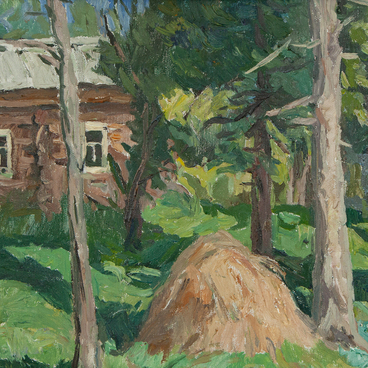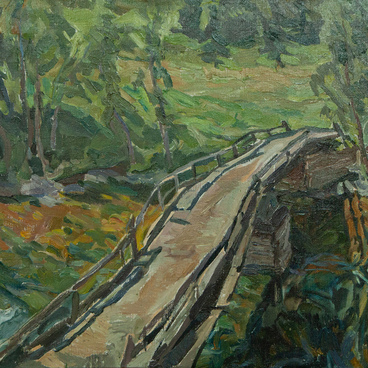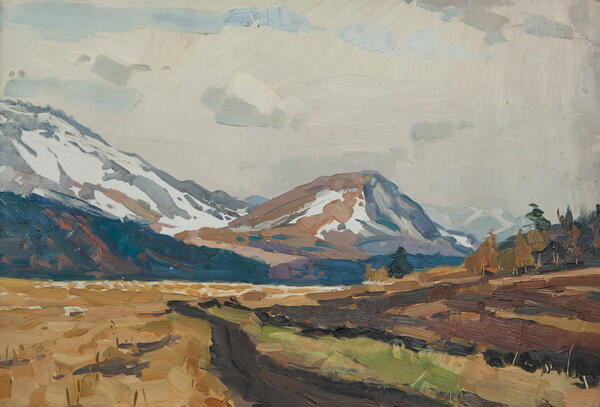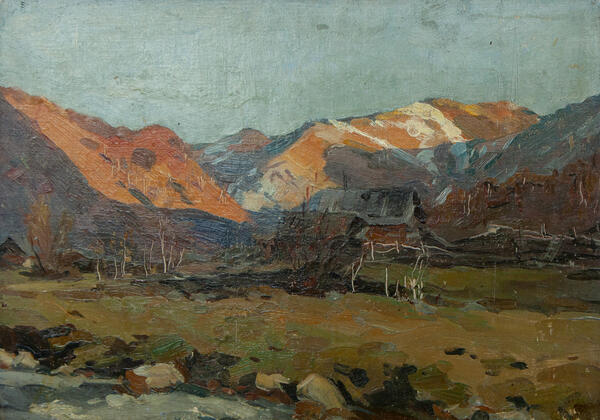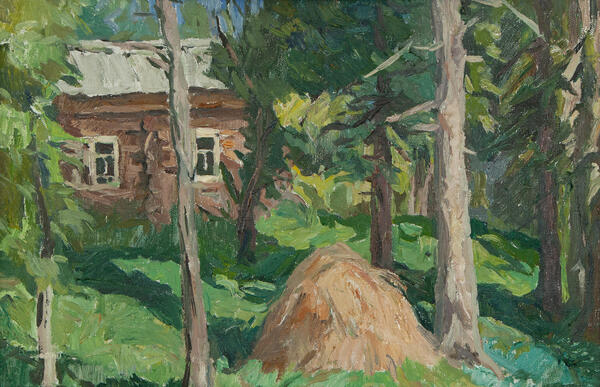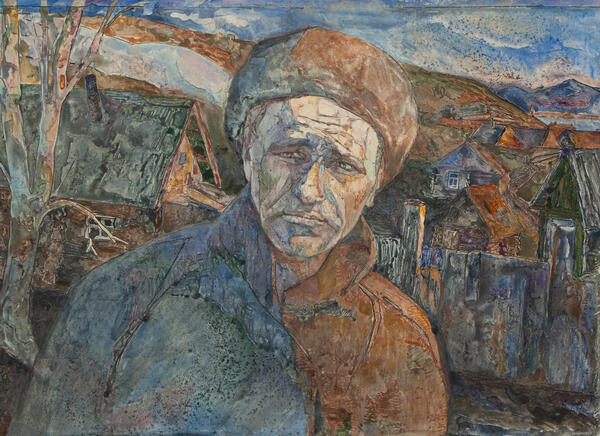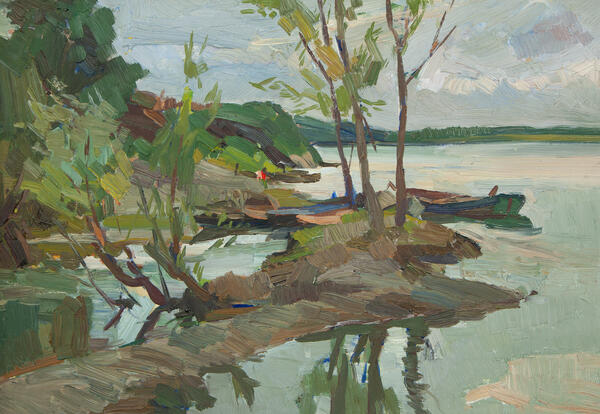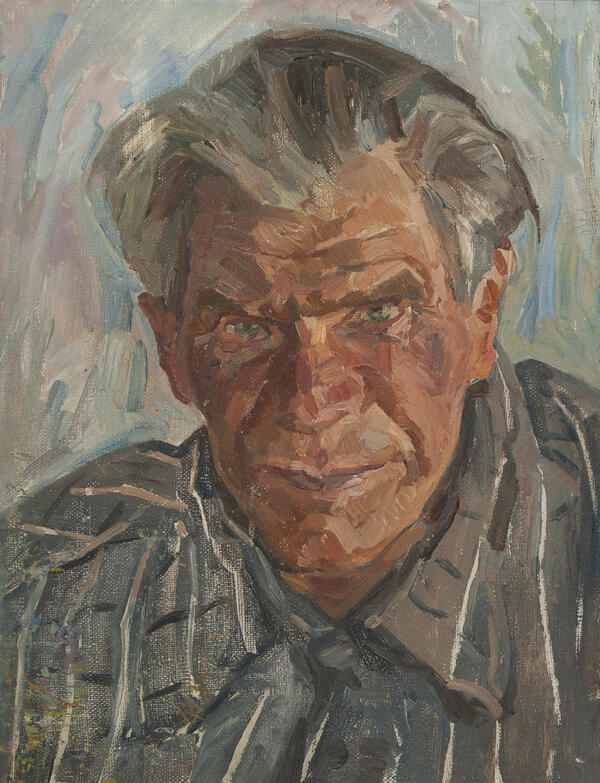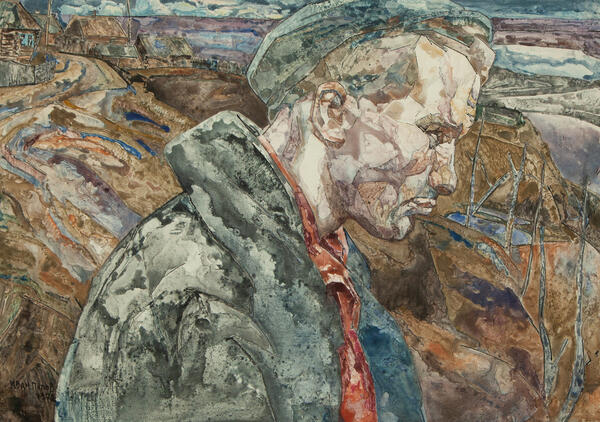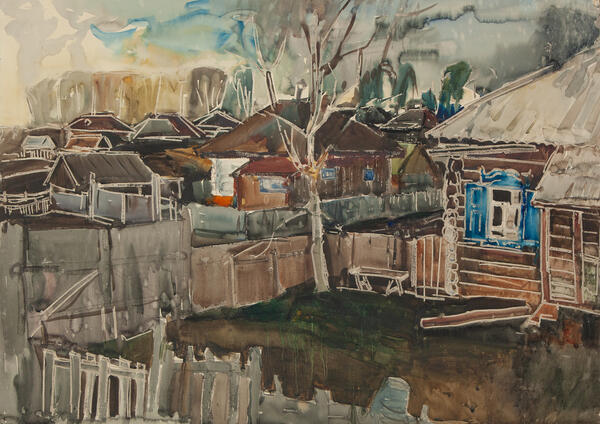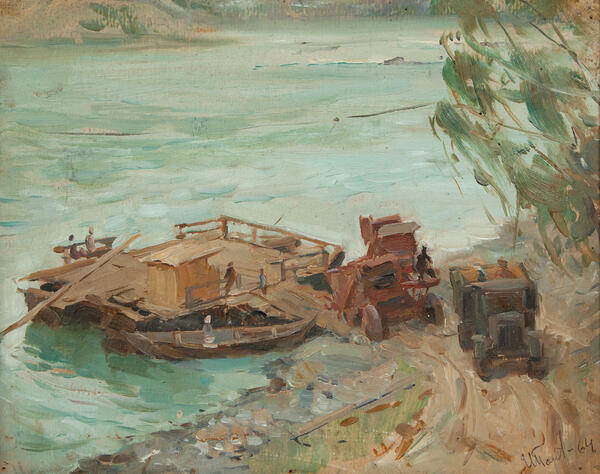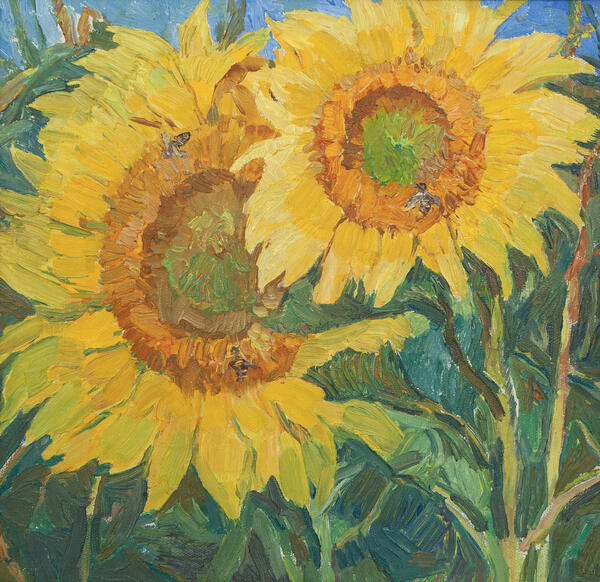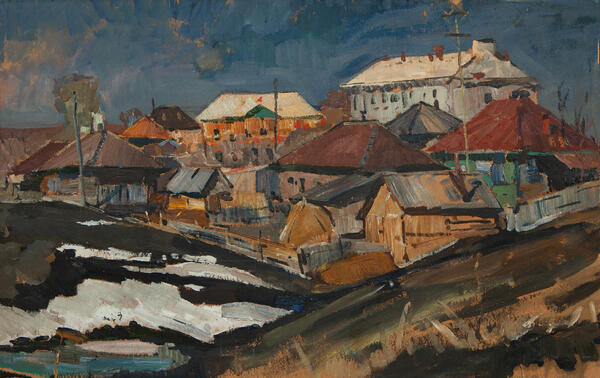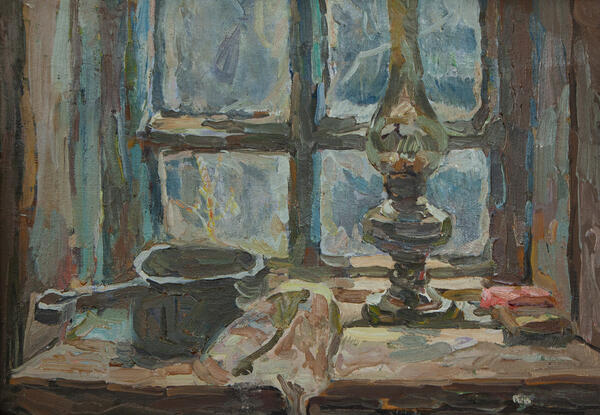The exhibition of the Iskitim Museum of Arts and History features Ivan Popov’s painting “Bashchelak Valley”.
The artist depicted a tent camp placed next to a strong and mighty tree, against the backdrop of snowy mountain peaks. In 1978, a similar camp was set up by an expedition of students and professors from the Moscow Institute of Environmental Problems of the Biosphere at the Academy of Sciences of the USSR. The team traveled throughout the Altai region for a month and a half and included Ivan Petrovich Popov. This was a time of exciting hikes, new discoveries, deep conversations, and new studies. Throughout the difficult but exciting journey, the artist was accompanied by his son Andrey. It was thanks to him that the stories behind many of the works from this period have been preserved. One of the expedition’s objectives was to hike in the Bashchelak Ridge. Their determination to see picturesque lakes outweighed the fear of difficulties. They rode horses and successfully completed the difficult 30-kilometer-long journey.
The Bashchelak Ridge is located in the northwest of the Altai Mountains. It stretches for 120 km and reaches a height of 2,423.4 m above sea level. The ridge is composed of crystalline slate and granite, and lies between the Charysh and Anuy Rivers, forming a watershed. In the northwest, the ridge is low, covered with a forest steppe, while in the north and northeast, it is dominated by dark coniferous taiga. In the south, there are larch forests. At altitudes above 2,000 m, mountain tundra and alpine meadows can be found. There are natural and historical landmarks in the area of the Bashchelak Ridge, including waterfalls on the Shinok River, the Museum Cave, and the Robber Cave. The Bashchelak Nature Reserve has been established in the highest area of the ridge.
During the expedition, Ivan Popov painted many studies.
Three of them — “Bashchelak Valley” and two views of Lake Bashchelak — are now kept
in the collection of the Iskitim Museum of Arts and History.

